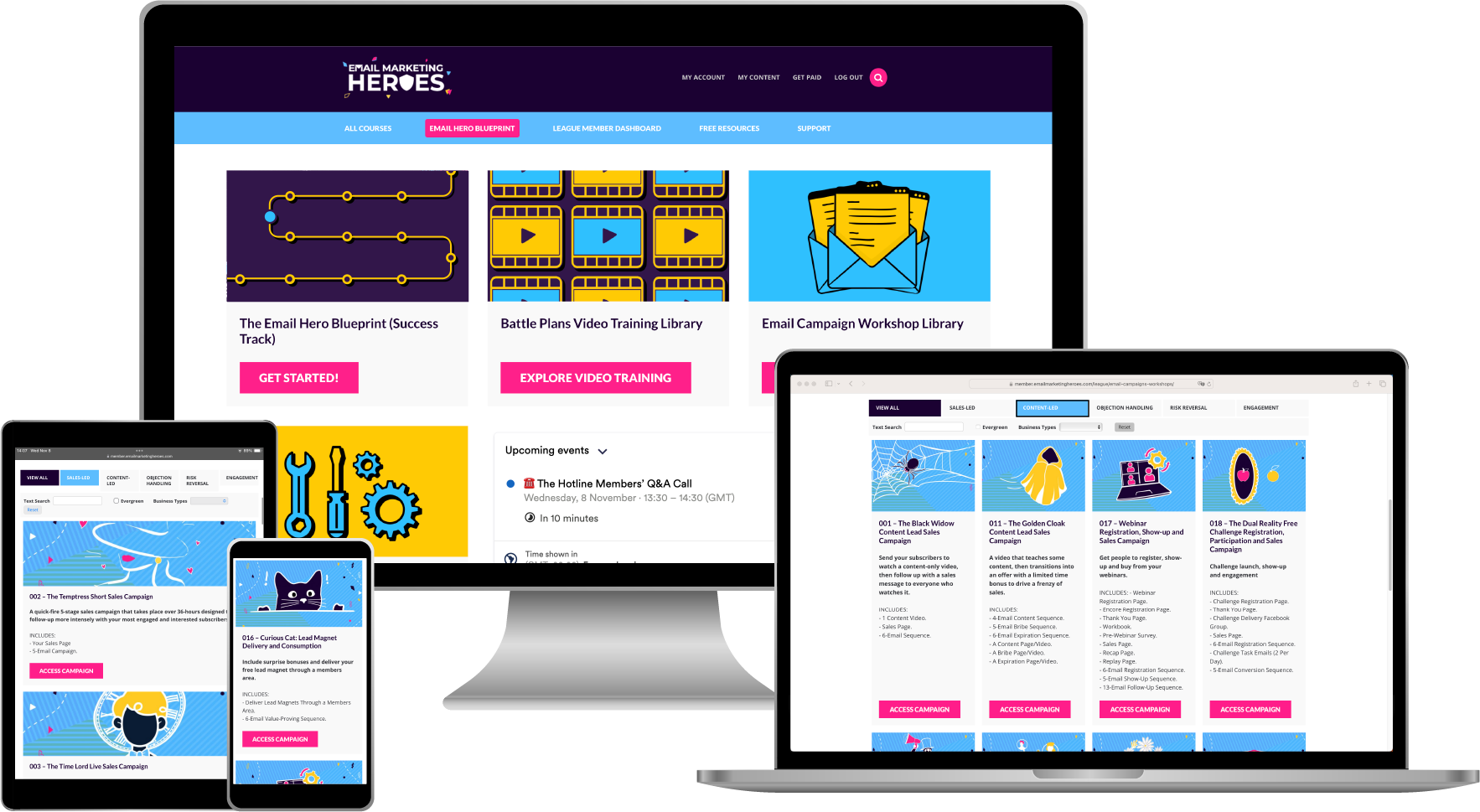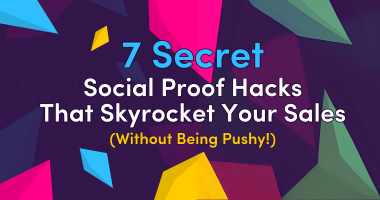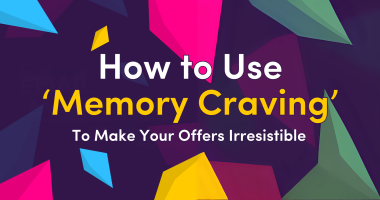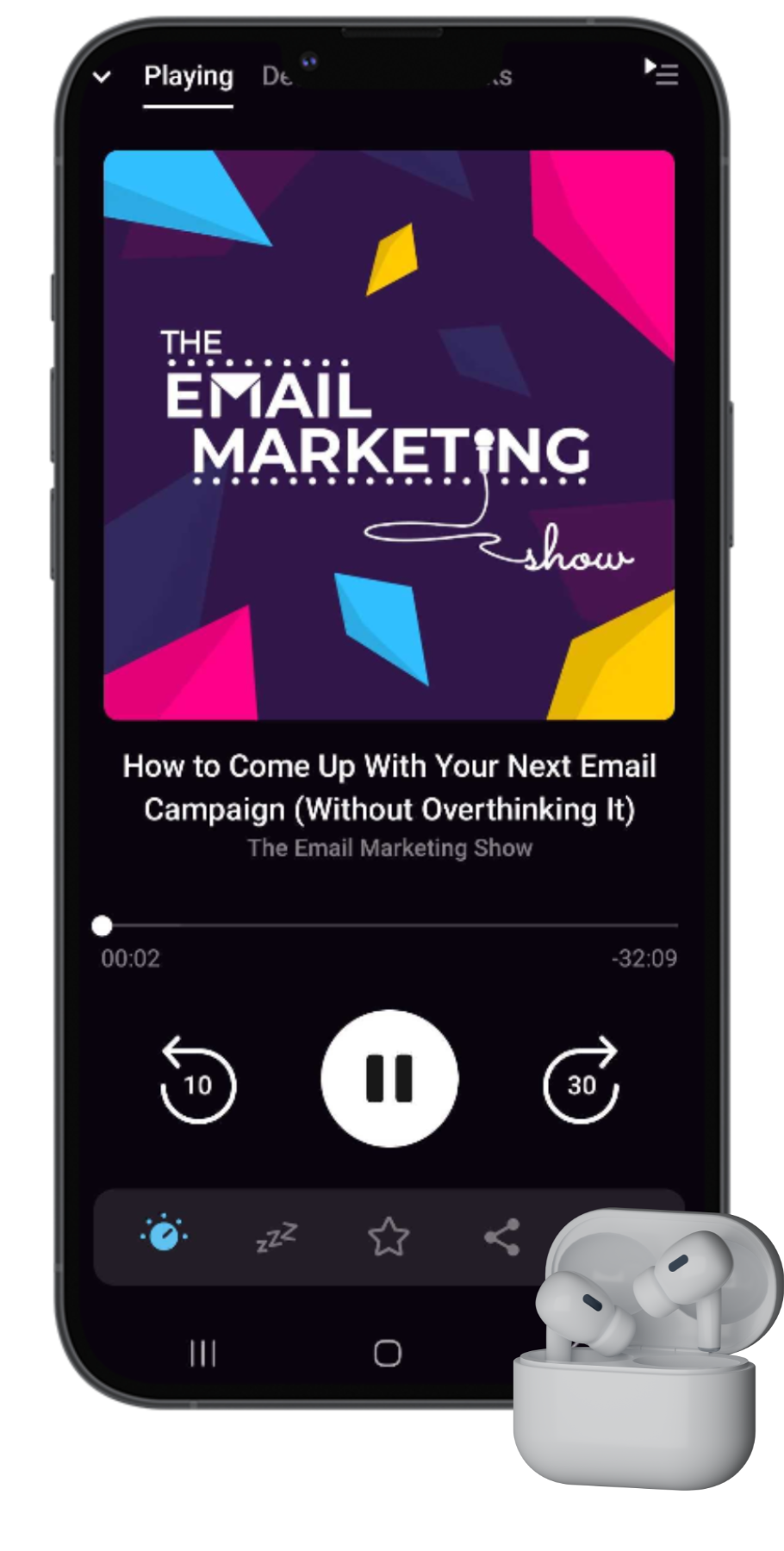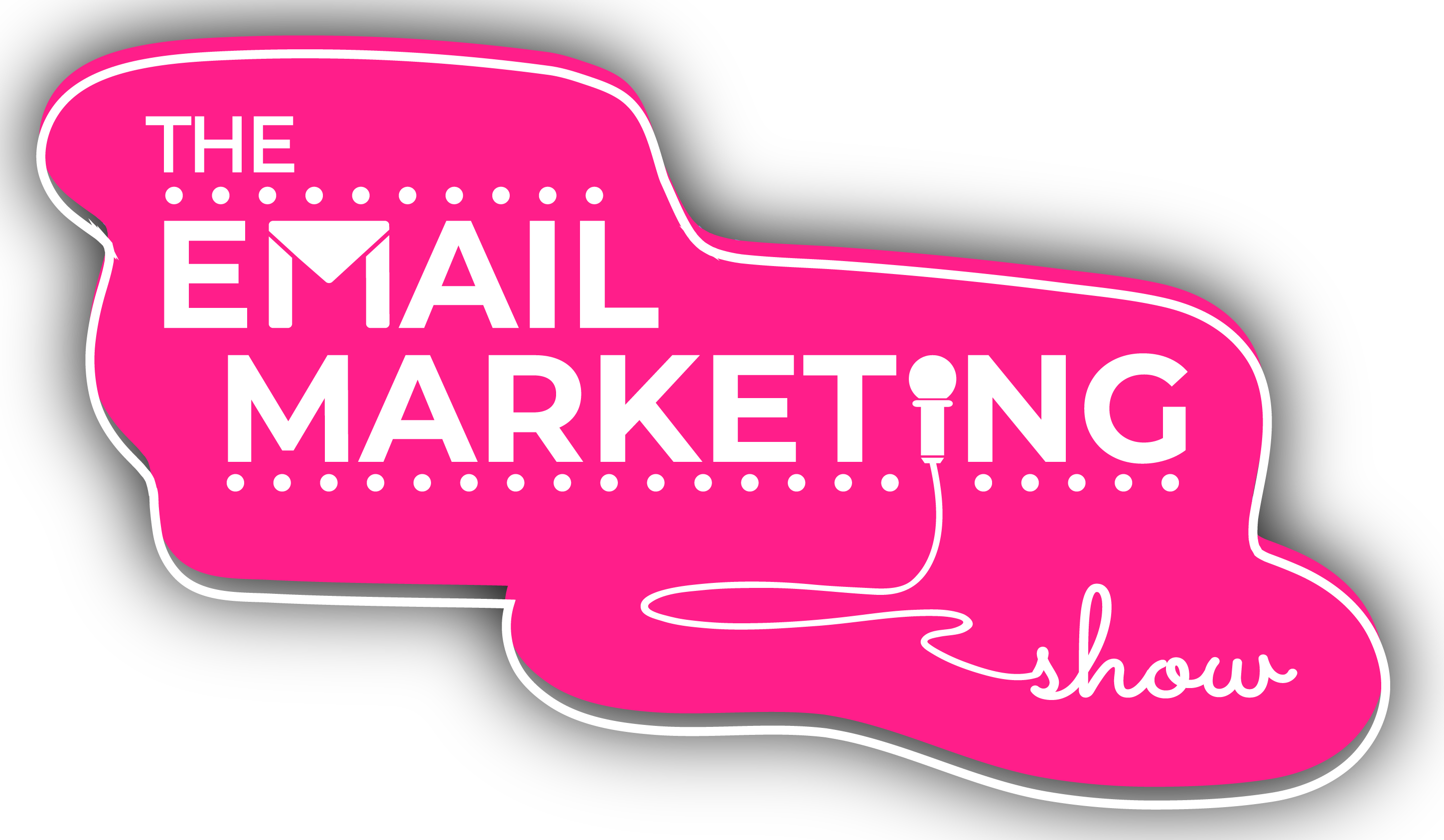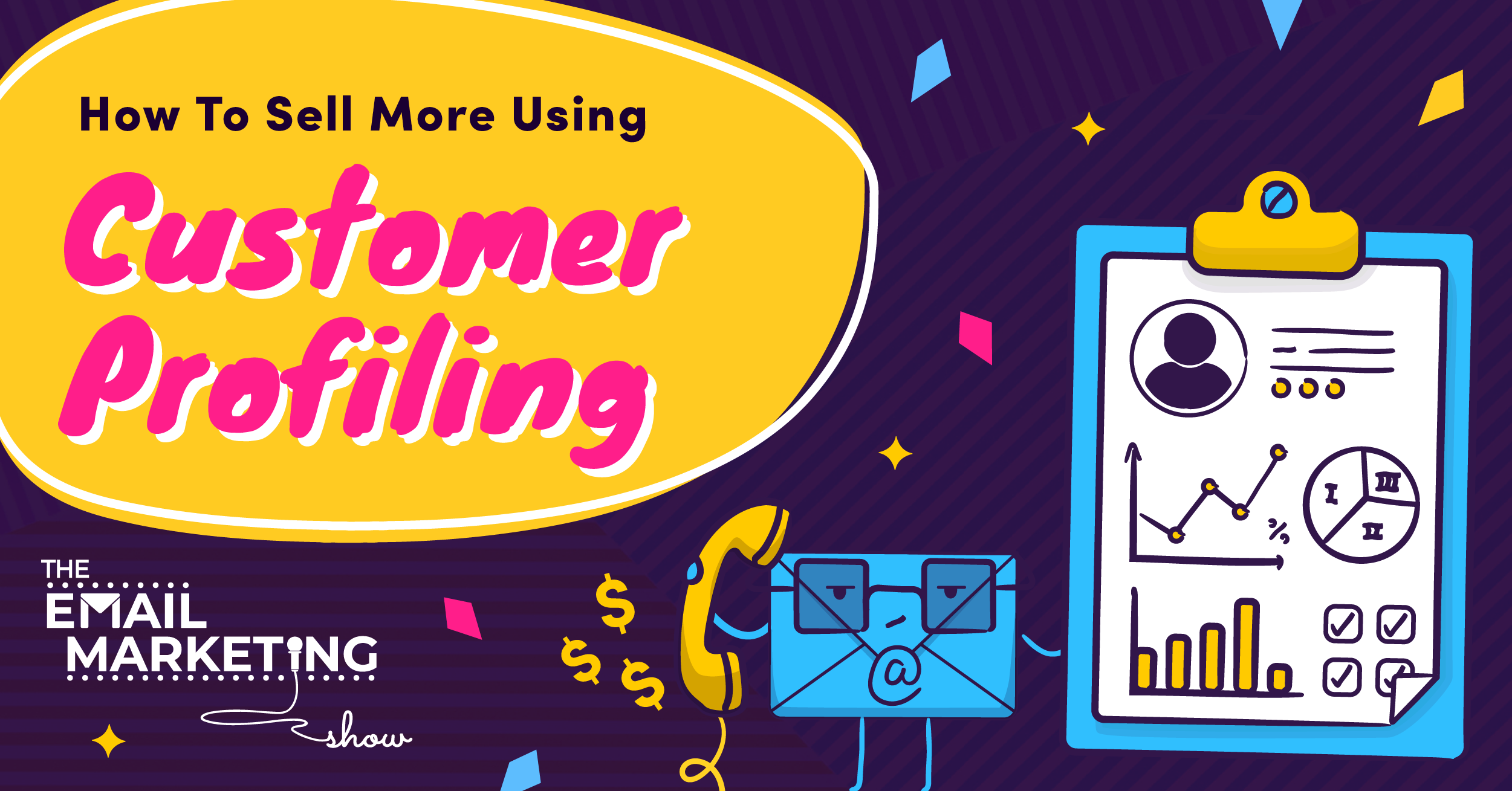
Understanding Customer Profiling – How To REALLY Get To Know Your Audience The Right Way (And Sell More)
What is customer profiling and do you really need it? Yes, you do. But only if you do it the right way. Because when you get it spot on, it's not as boring as it sounds. Plus, it's no longer an empty tick-boxing exercise you have to do every year. And yes, it will bring more money into your business.
Ready to get all the juicy stuff about this?
Let's go.
SOME EPISODE HIGHLIGHTS: (0:14) Want a FREE resource to get more clicks on your emails? Check out Click Tricks. (4:06) Customer profiling demystified - what exactly is it? (5:19) Is there such a thing as too much segmentation? (9:15) How can small businesses effectively profile their customers? (11:15) Why do you want to collect customer data? (13:12) Start running (good) surveys. (17:18) The Phone Pshychic approach. (21:35) How to run calls with your subscribers. (26:45) Check out ResponseSuite. (28:22) Subject line of the week.
Customer profiling demystified – what exactly is it?
What do we, as small business owners and email marketers, need to know about subscriber and customer profiling? Let's start with this. Customer profiling is all about taking the people on your list and working out who they are, what they want, where they are, and most importantly, whether they bought from you yet or not.
So immediately, on your list, you can identify two types of people – those who’ve bought from you (i.e. your customers), and those who haven’t. And out of your customers, you have people who are super fans (and have bought everything you ever had for sale), those who only bought one thing a long time ago and then never again, and everyone else in between.
Why is it helpful to have this information about the people on your list? Because it allows you to figure out what to do with them.
Is there such a thing as too much segmentation?
A mistake we definitely made when we got started was to apply tags within our email marketing platform that would give us loads of information about people, including what their interests were based on what links they clicked on in our emails. But did we really need all that information? Probably not. There are very few businesses that need to know that level of detail about someone. Most of us don’t need a huge granular level of tagging based on people’s interests.
If you have products that align specifically with each of those interests, then great. But if you don’t, then too much tagging is definitely a thing. Ultimately, you want to boil the business down to what you sell and then understand what would be useful information to have so that you can sell to those people. In other words, all you have to do is find out enough about people in order to be able to sell your product. That way, you can identify those you should sell to versus the ones you should keep away from.
So as a tiny business, you don’t need hundreds of segments. You wouldn’t send different emails every day to each of your segments anyway – most people struggle with just sending one! It’s great to have segmented data in your list, but if you have too many segments, you can't easily do anything with any of them. And that's a bit of a problem, don't you think?
How can small businesses effectively profile their customers?
Let’s look at some of the ways you can divide people up. First of all, segmenting people based on whether they've paid you money (i.e. they're customers) or they haven't yet is too generic – it doesn't provide enough information for you to make good business decisions. What you also need to capture about all your subscribers are the following three fields:
- Recency. This includes the date when this person last bought something from you. If they haven't bought anything yet, that field will be empty.
- Frequency. This is a numerical value of how many things the person bought from you.
- And Monetary (value). This tells you how much money this person has spent with you so far.
How you apply this in your specific business is going to be different, but against each contact in our list, we hold these three custom fields. It's worth pointing out that this information is only useful if we’re going to do something with it.
Why do you want to collect customer data?
One of the reasons why we started collecting this data is that we want to be able to identify the people who have bought something recently. And we want to do that so we can make them another offer while they’re in buying mode with us. They're focused on what we sell, and they're investing and learning. So this is a great time to offer them something else.
Obviously, because you also hold Frequency information, if you know that person's already bought everything you have to offer, there’s no point in reaching out and asking them to buy something. And if you have a lot of people on your list who fall into that category, you might have an opportunity to create a new offer. The opposite is also true – if you’re thinking of creating a new product but you know that most people haven’t bought your existing offers, then you might want to generate some interest in what you already have instead.
Also, by looking at the Monetary custom field, you can find the people on your list who’ve spent the most money with you. Those are your high investors – the people who really like your stuff. So maybe you can offer them something more premium.
There’s a lot you can do with customer data, including pulling out averages. On average, when did most people last buy, for example? Or how many products have they bought? How much are they spending with you? Over time, when you collect and analyse this information, you'll be able to see how you’re doing and break up your subscribers into key customer segments.
Start running (good) surveys
Collecting statistically useful customer data automatically and in the background is the first step towards customer profiling. That's based on the spending behaviours of your subscribers. But there's more you can do. And that's reaching out to your subscribers and customers to get their input.
How do you go about that? One of the methods we use (and that we’re big fans of) is running surveys. Good surveys though – not ones that are terrible, too long, and no one will want to complete! We like to create really simple surveys to collect data about what people are struggling with, what their biggest priority is right now, and what they’ve tried in the past. We ask a bunch of simple questions to allow people to give us data that’s going to enable us to make business decisions.
But we can't stress this enough – before you send out your survey, ask yourself what you're trying to do with the information you’re about to gather. Don't send out surveys for the sake of it! You want to ask questions that serve you and your business – what specific decisions are you trying to make? Based on that, you’ll then decide what questions to ask. For example, if you’re trying to find out how your audience refers to the problems they’re experiencing, ask them questions that allow them to give you that. Only collect information that you know you’re going to use.
Another key thing is to make sure you only send your surveys out to a small percentage of your list – something like 10%. And then watch the results come in. When you see the answers, you’ll know whether you’ve worded your questions correctly in order to get the types of responses you want. If people aren't taking the questions in the way you intended or you aren't getting answers that are useful, then you can refine and adjust accordingly (if you need to).
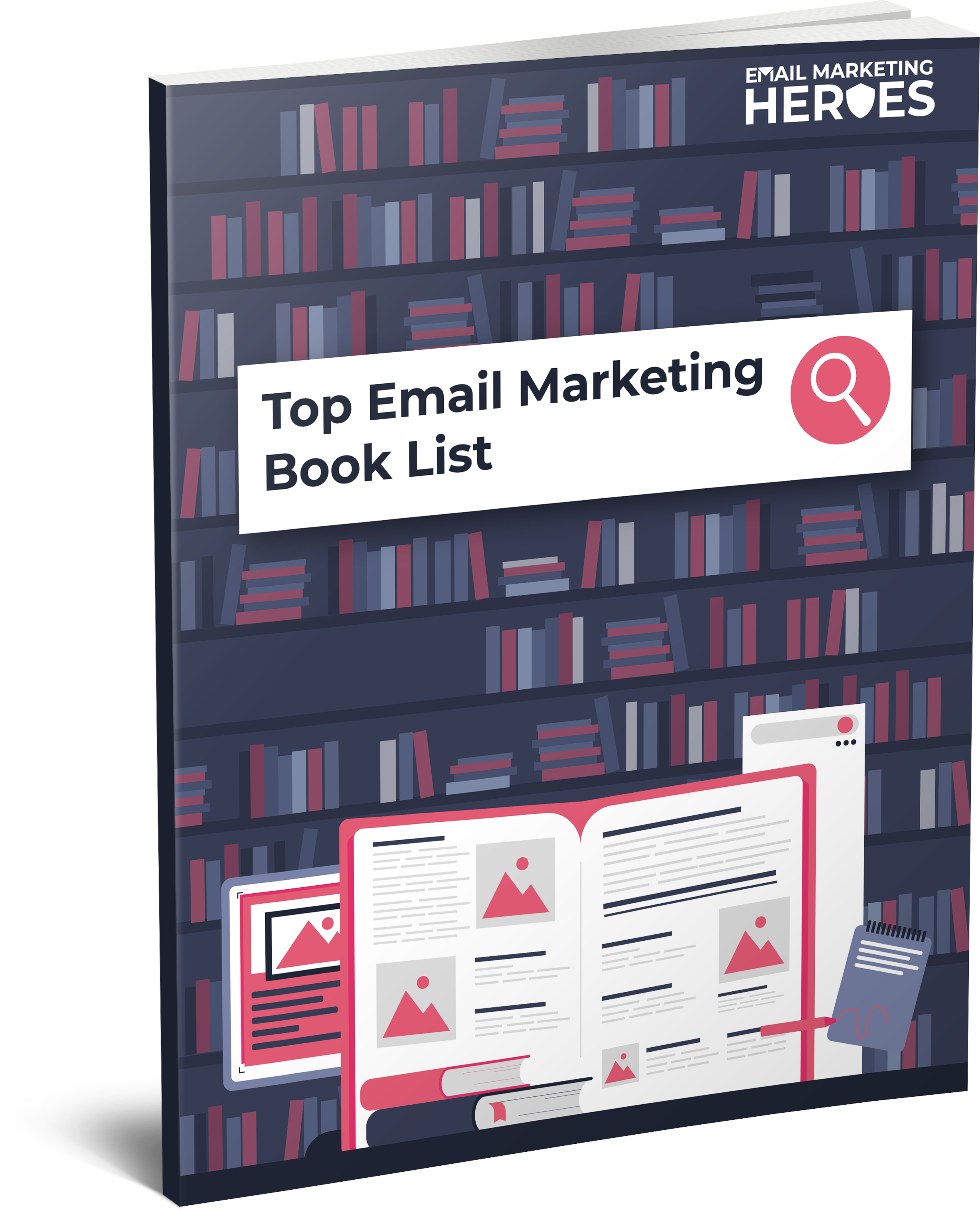
The Top 10 Books To 'Power Up' Your Email Marketing
10 book recommendations that will improve all areas of your email marketing (including some underground treasures that we stumbled upon which have been game-changing for us).
The Phone Psychic approach
This is about jumping on a call with people. It doesn't have to be the phone – it could be on Zoom, Skype, or some other digital platform that allows you to speak to your audience directly. We regularly have calls win our non-customers – i.e. the people who haven’t bought from us yet. This allows us to collect qualitative data about our subscribers and their current position, mindset, and state.
When running surveys, we generally collect stats and data to segment and target people accordingly through multiple-choice questions and answers. But during these calls, we ask them questions that lead to longer-form answers. We prod, poke, and push in the right direction. If you’re inside our membership The League, you’ll have seen our battle plan called Phone Psychic. This has our entire approach and breaks down all the questions to ask so you can identify the people to call and decide what to do with the data. It also details how to get on a call with people in the first place because you want a good angle for that.
One of the key things you want to do during these calls is to pick up on the language that your audience uses. For example, we noticed that our subscribers and customers rarely use the words revenue and profit. They talk more in terms of making more sales. And so that's the phrase we tend to use too – it's more colloquial and more relatable to our customers.
Why speak to non-customers too
You'll also want to make a point of having calls with non-customers. People who have already bought from you clearly believe in what you do, so their opinions are somewhat skewed. With non-customers, you get a different type of value because these subscribers haven't yet understood what you can do for them.
So get on these calls not with the intention to sell but to understand what the person is up to. And often, you'll find that when you ask someone why they haven't joined your programme yet, the next day they'll go and do just that. Because they've been possibly thinking about it. So while these aren’t sales calls (and the aim is to collect useful profiling data), they might generate more sales than you’d anticipated.
How to run calls with your subscribers
If you're interested in jumping on a call with some of your subscribers, the first thing you want to do is to record the call. Tell the person in advance that you're doing this for research purposes, and ask them if it's okay for you to use the content in your marketing. If they say yes, hit record and re-confirm they’re happy for you to go ahead.
After the call, grab the transcript and then head over to ChatGPT and ask it to summarise the main points and themes of the call. Then go through it and pull out phrases verbatim – exactly as the person says them. You could even ask ChatGPT to summarise the main reason why the person didn’t buy, what pain points they're experiencing, and what objections they have that stop them from buying from you. This is brilliant because you can then use all these words in a new email campaign. Or you can update your sales page based on what people tell you.
What’s key here is to grab their exact turns of phrase. You want to use the words that come from your prospective customers’ mouths in your copy. That way, when they read your content, they think you absolutely get them. This is the biggest shortcut to writing high-converting sales copy. It removes the guesswork for you. And it also addresses those underlying subconscious assumptions that we, as business owners, often make about our audience.
Once you have the information, if you feel stuck on how to overcome any objections, you can ask ChatGPT. The AI tool can act as a professional sales copywriter and come up with some suggestions for you that would be both ethical and effective.
You can then start emailing your audience based on the segments you’ve identified using the phrases you picked up along the way. Remember that the key to good customer profiling is to be super clear on what you're going to do with the data you collect. That way, the information you gather will help you convert better and make more sales.
Check out ResponseSuite
If you're interested in running surveys, check out the platform we put together called ResponseSuite. Even before we started teaching email marketing, we were passionate about surveys. We wanted to serve our audience better and to segment them inside our email platform based on what people were telling us. But at the time we didn't have the technology to do what we wanted. So we decided to hire a software developer, get an office, and start a business.
There's a real need for people to be able to carry out this kind of marketing. That's why we created the platform in the first place! You can build and drag and drop surveys really easily. And then you can hook them to your email marketing platform and segment people based on which answers they choose. So go ahead and grab a completely free account here.
Subject line of the week
This week’s subject line is “How to be better looking.” We took this surface-level thing that everyone aspires to (be better looking) and used it as a subject line. It's intriguing and evokes curiosity because it seems impossible. Another similar idea would be “How to make a million dollars.” It’s a bit out there and seems impossible to achieve. And that's why the subject line works. So check it out!
Useful Episode Resources
Related episodes
What We Really Think About Customer Avatars.
6 Techniques To Segment Your Email Subscribers.
When Is It Too Early to Segment Your Email Subscribers?
FREE list to improve your email marketing
If you want to write better emails, come up with better content, and move your readers to click and buy, here's how. We put together this list of our Top 10 most highly recommended books that will improve all areas of your email marketing (including some underground treasures that we happened upon, which have been game-changing for us). Grab your FREE list here.
Join our FREE Facebook group
If you want to chat about how you can maximise the value of your email list and make more money from every subscriber, we can help! We know your business is different, so come and hang out in our FREE Facebook group, the Email Marketing Show Community for Course Creators and Coaches. We share a lot of training and resources, and you can talk about what you're up to.
Try ResponseSuite for $1
This week's episode is sponsored by ResponseSuite.com, the survey quiz and application form tool that we created specifically for small businesses like you to integrate with your marketing systems to segment your subscribers and make more sales. Try it out for 14 days for just $1.
Join The League Membership
Not sick of us yet? Every day we hang out in our amazing community of Email Marketing Heroes. We share all of our training and campaigns and a whole bunch of other stuff. If you're looking to learn how to use psychology-driven marketing to level up your email campaigns, come and check out The League Membership. It's the number one place to hang out and grow your email marketing. Best news yet? You can apply everything we talk about in this show.
Subscribe and review The Email Marketing Show podcast
Thanks so much for tuning into the podcast! If you enjoyed this episode (all about doing customer profiling the right way) and love the show, we'd really appreciate you subscribing and leaving us a review of the show on your favourite podcast player.
Not only does it let us know you're out there listening, but your feedback helps us to keep creating the most useful episodes so more awesome people like you can discover the podcast.
And please do tell us! If you don't spend time on email marketing, what do you really fill your working days with? We'd love to know!

